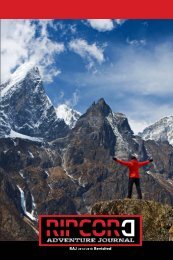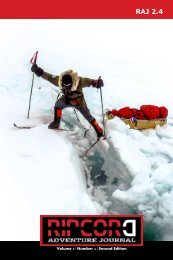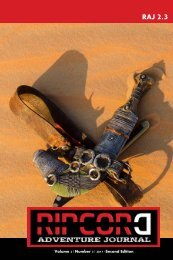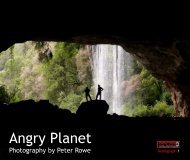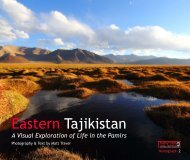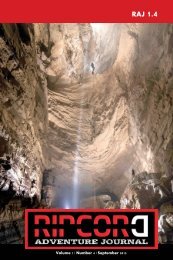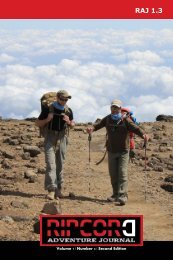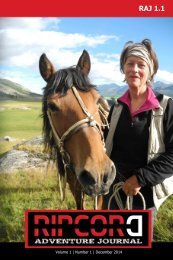Ripcord Adventure Journal 2.1
Where do we begin? A fast track literally, to Germany where a sports car and our journalist are tested to the limits and left begging for more. Following the exploits of a legendary aviator from continent to continent, our Journal proceeds to venture across Mali, cycling the route to a fabled city of gold and encountering a festival of mud which annually repairs what must be one of the "newest" old buildings in the world. Our next journey explores the concept of adventure on board a luxury cruise ship as it rounds the infamous Horn, can Shangri-la really exist at sea? This leads us thoughtfully to the colourful Monlam Cham festival of Tibet as it is explored by two friends in search of Marco Polo and inner calm, we then journey forward to an encounter with a personal hero, visit eleven architectural gems on the road less travelled and complete our whirlwind travels in the land of the Midnight Sun.
Where do we begin? A fast track literally, to Germany where a sports car and our journalist are tested to the limits and left begging for more. Following the exploits of a legendary aviator from continent to continent, our Journal proceeds to venture across Mali, cycling the route to a fabled city of gold and encountering a festival of mud which annually repairs what must be one of the "newest" old buildings in the world.
Our next journey explores the concept of adventure on board a luxury cruise ship as it rounds the infamous Horn, can Shangri-la really exist at sea? This leads us thoughtfully to the colourful Monlam Cham festival of Tibet as it is explored by two friends in search of Marco Polo and inner calm, we then journey forward to an encounter with a personal hero, visit eleven architectural gems on the road less travelled and complete our whirlwind travels in the land of the Midnight Sun.
You also want an ePaper? Increase the reach of your titles
YUMPU automatically turns print PDFs into web optimized ePapers that Google loves.
Mali's Lifeline: Ségou to Timbuktu<br />
Kate Leeming<br />
Around the time I was developing and organising this expedition, I<br />
had acquired a taste for Ali Farka Touré’s music. He used a mix of<br />
traditional instruments such as a single-stringed violin, the njarka,<br />
and the ngoni, a Malian lute with more standard instruments like the<br />
guitar. The ambience of his music fired my imagination as to what it<br />
might be like to travel through his home territory, the realms of the<br />
River Niger between Ségou and Timbuktu. Ali Farka Touré is<br />
internationally known as the “King of the Saharan Blues”, a genre<br />
from which all blues music derive their origin – via the slave trade.<br />
The waters of the River Niger, the essence of Ali Farka Touré’s<br />
heartland, spring from the Fouta Djallon in Guinea, the same<br />
highlands as the Senegal and Gambia rivers originate in. West<br />
Africa’s largest river carves a 4200km path from the tropics through<br />
the savannah and Sahel, kissing the Sahara at Timbuktu before<br />
arching south through Niger, forming a border with Benin and<br />
finally through Nigeria to empty itself in the Atlantic Ocean.<br />
The largest portion of the river, crosses Mali, including what some<br />
cultures refer to as the Camel’s Hump. Just as the hump of a camel<br />
provides sustenance for the animal in times of hardship, the Camel’s<br />
Hump of the Niger River is a vital source of life for the twenty or so<br />
cultures living in its dry hinterland. And just as the camel itself is a<br />
mode of transport bringing trade and culture to desert regions, the<br />
Niger does the same.<br />
The unusual crescent shape of the river baffled European and North<br />
African geographers for some two millennia. They could not<br />
understand why the waters flowed north from its source, 240km<br />
from the Atlantic Ocean, to the desert before bending east at<br />
Timbuktu. Early explorers such as Ibn Battuta, who passed through<br />
Oualata on the way to the region, had the Niger drawn in as the<br />
Western Nile. The first Europeans who explored the African west<br />
coast thought it was connected to the Senegal River. It wasn’t until<br />
the early nineteenth century that Mungo Park solved the riddle of<br />
the river’s course (outside of local knowledge).<br />
20




